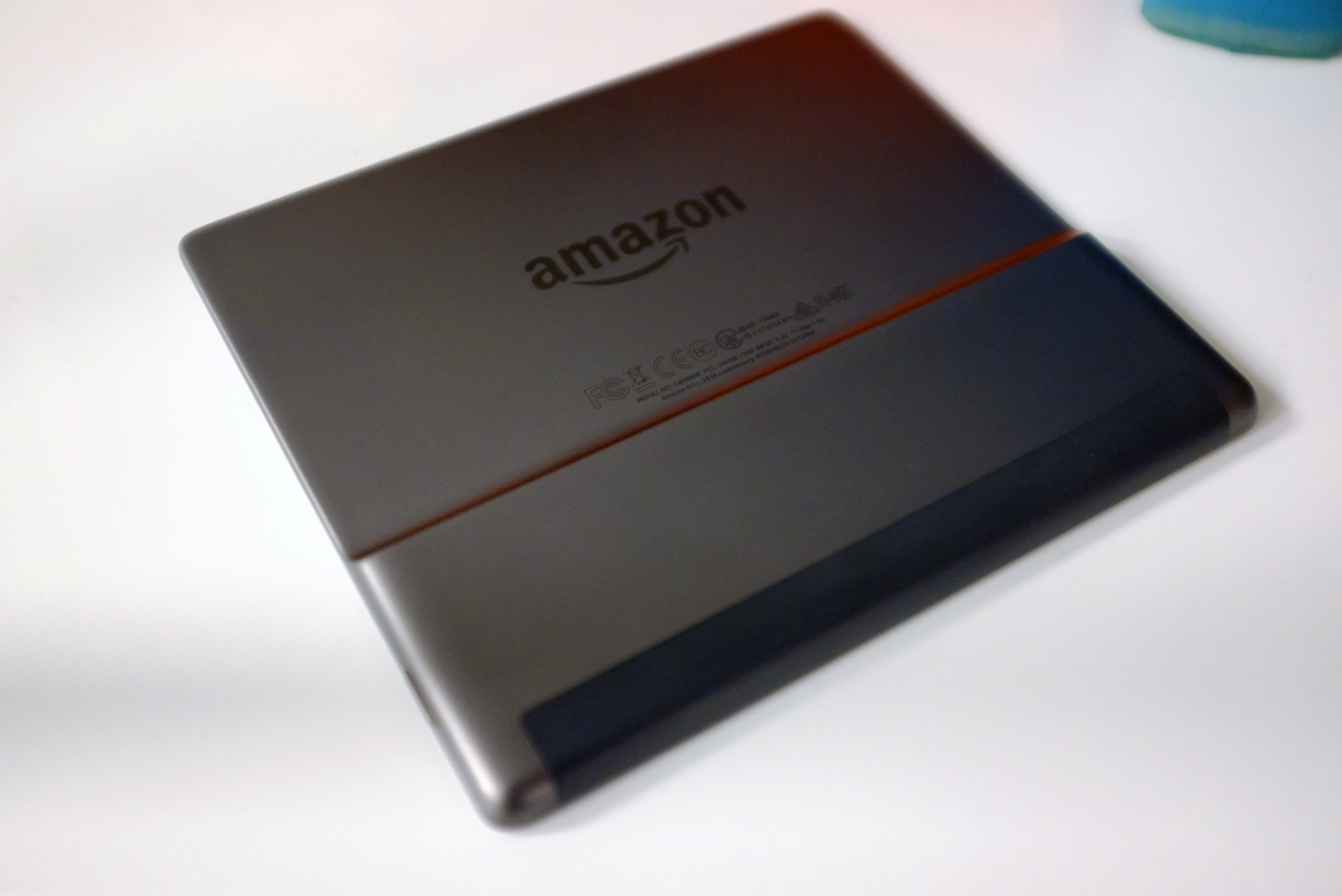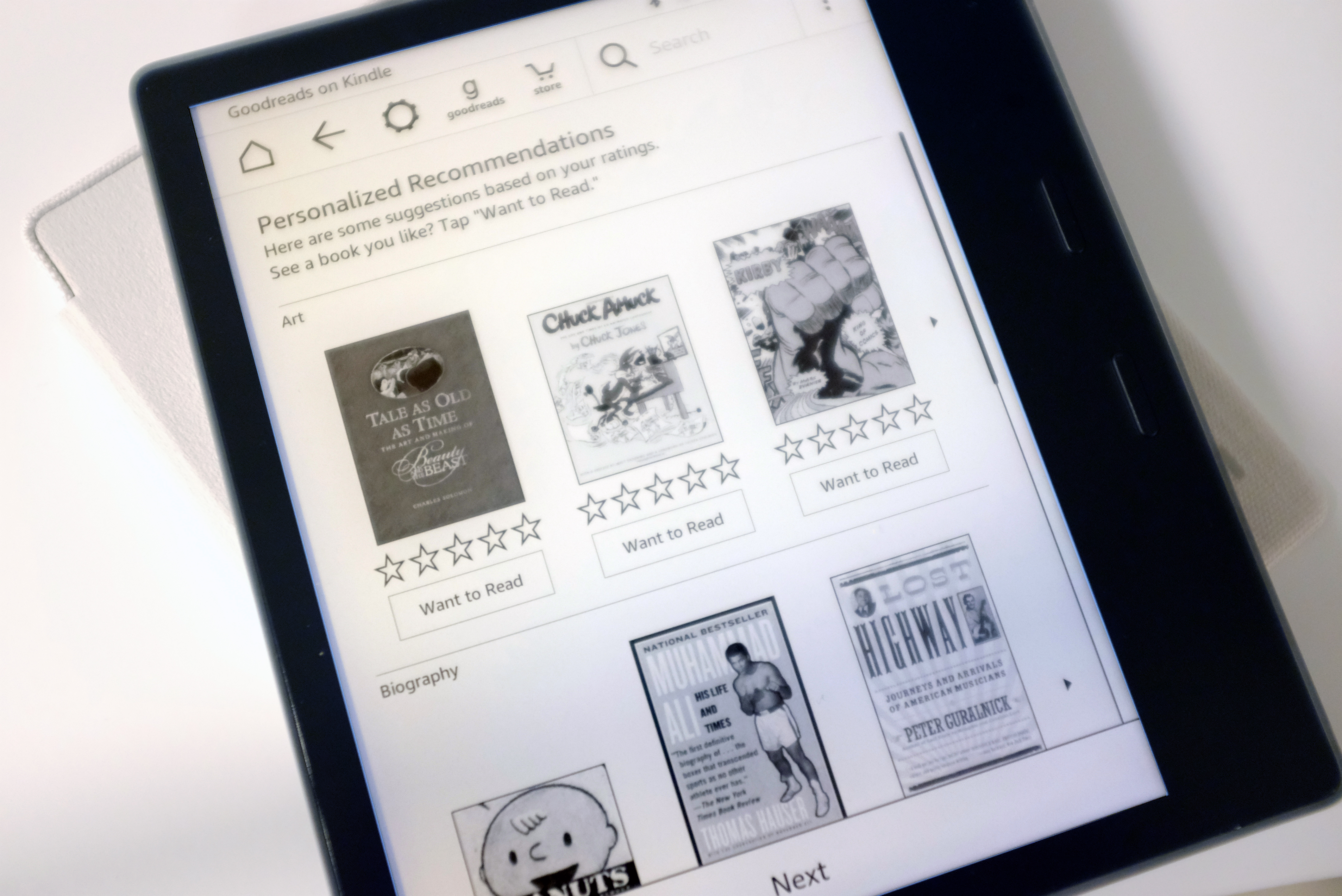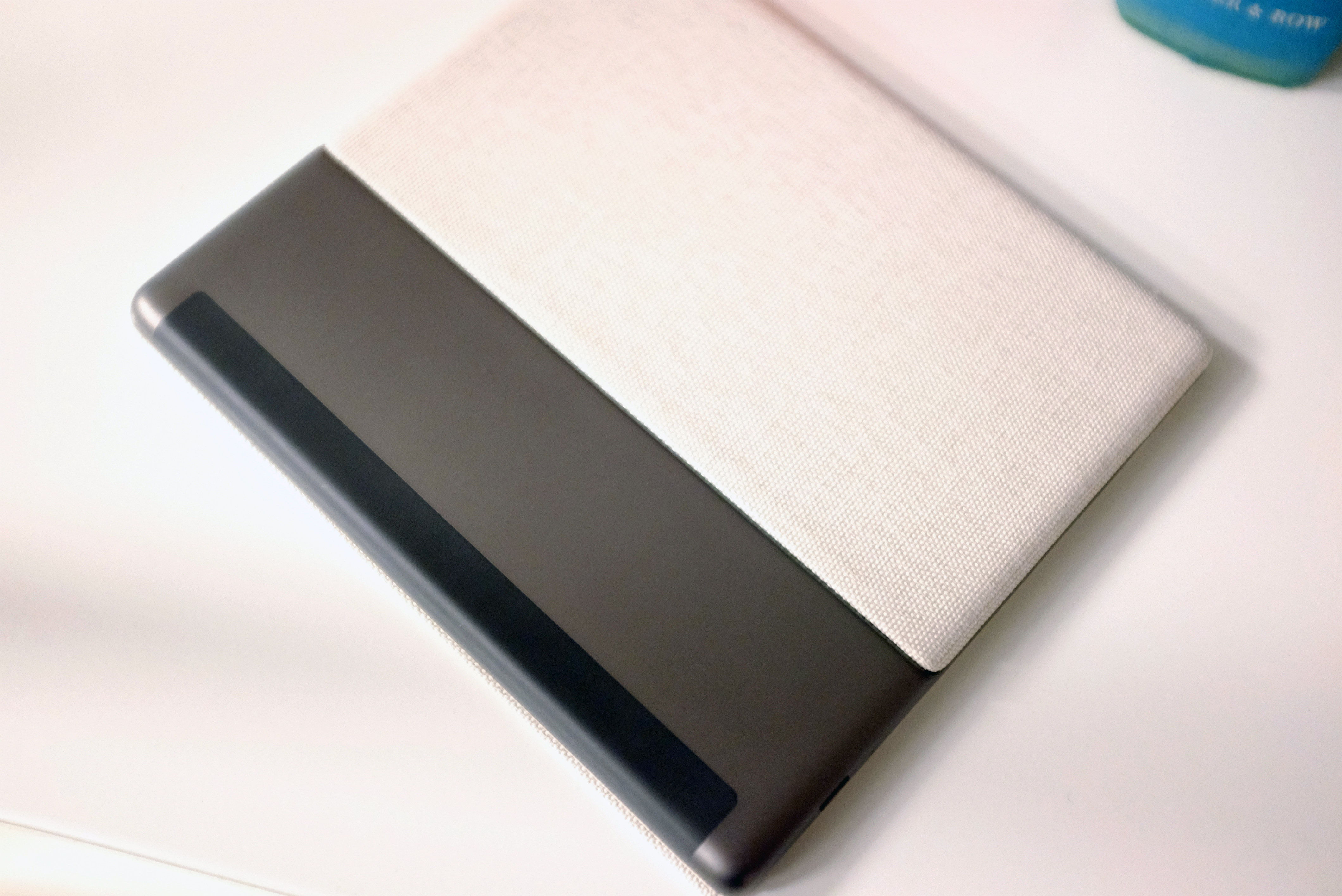A few years ago, the premium e-reader was an oxymoron. For Amazon, Kobo and Barnes and Noble, tablets were the clear high end of the reading market, with color touchscreen and full app stores. For a moment, it seemed inevitable that e-ink devices would soon become obsolete.
But the products never went away. There were just too many benefits that LCDs couldn’t replicate: weeks long battery life, outdoor reading and mitigation of eye fatigue. E-readers would mostly outlive reading tablets, while the hitherto unheard of premium category began to emerge. When the Kindle Oasis debuted last year, it was clear that Amazon had the category on lock-down.
The premium category remains a niche, of course. The new version of the reader is priced between $270 and $350, meaning you can get three entry-level Kindles for the price of the cheapest version of the Oasis. The benefits are clear, of course, from a much more solid build with a higher-res, larger screen to Audible functionality and, for the first time on a Kindle, waterproofing.
It handily grabs the title of the best Kindle ever, and is a pretty solid contender for best devoted e-reader ever. The new Oasis walks that eternal e-reader tightrope between forced simplicity and new features — and mostly succeeds. It’s a bold acknowledgement on the 10th anniversary of the original Kindle that the category is still going reasonably strong. And yeah, it’s gonna cost you.
Rear bumper

But enough of that e-ink stuff. Let’s actually start things off by talking about the back, because e-reader backs are important and nobody really talks about them. The back was one of the things that kept me coming back to Nook readers — Barnes and Noble actually put some thought into them. They are, after all, the part of the reader your hand is in contact with more than any other. You’ll likely spend hours a week touching the thing — many, many hours, if you’re the sort of reader who’s inclined to spend ~$300 on a device.
The Oasis has an aluminum back — the kind you’ll find on premium smartphones, every other year, when the company decided not to go with glass. It’s night and day in terms of premium feel, compared to the standard plastic backing you’ll find on most readers. It looks a lot nicer, too, but chances are you’re not going to spend a lot of time looking at the brushed aluminum backing.

There’s also that unsightly lip. I’m not in love with the look of the bump — a compromise the company made in trying to make the rest of the device “as close to paper as possible.” But electronics innards (particularly the battery) need a place to live, and Amazon essentially bunched them all up in one corner in order to distribute the bulk of the reader’s weight directly into the hand.
In theory, the bump also gives the hand a place to grip onto the back of the device, though it’s a bit shallow and too smooth to really get much traction. Also, if you end up picking one of Amazon’s proprietary cases, it essentially negates the uneven backing, slotting in right next to the bump.
Back to the buttons

Everything that’s old is new again. So it’s probably no surprise that Amazon returned to physical page-turn buttons after years of swearing them off. It’s probably the thing that’s most annoyed me about e-reader design over the past several years. Touchscreens have improved on the devices, but they’re nowhere near the responsiveness or tactile pleasure of clicking that button. But manufacturers collectively decided to kill them, presumably for aesthetic reasons.
Like the battery bump on the reverse, utility thankfully trumps looks this time out, and two sizable buttons have been included among a black expanse of a side bezel. They’ve got a satisfying click to them and are plenty responsive. Best of all, they make it a lot easier to read with one hand, if you spend a lot of time hanging off a subway poll — or, you know, sitting on a beach with a Corona in the other hand.
The inclusion of an accelerometer is key here — unlike earlier Kindles, the Oasis has clearly defined sides, with the buttons positioned closest to the hand holding it. Because the Kindle knows which side is up, it’s able to flip the screen orientation, so it can be used right- or left-handed. Amazon even went so far as removing the logo from the front of the device, so there’s no clear top or bottom.
That side bezel adds a fair amount to the Oasis’s surface area — which is already pretty sizable, thanks to the company’s decision to add a full inch to the screen. Amazon’s not the first company to move beyond the standard six-inch display (in fact, this isn’t even the first time it’s done so), but it’s still a fairly radical change, as far as these things go. The whole industry seemed to collectively decide to move off six inches a while back.
By Amazon’s count, that equals out to about 30 percent more words per page. That, ultimately, means less page turning, of course. More screen area also theoretically means the device should be better for things like comics — though, as I’ve previously outlined, e-ink technologically hasn’t really made much progress in the last several years.
Sure the 300 ppi resolution is a notable improvement, but things are just too laggy and refreshes take too long to really enjoy something with a lot of art. Believe me, I’ve tried. Even with manga, which is drawn and printed in black and white, it’s just not going to happen. The Kindle is a text delivery device.
H2O, yes

The biggest news here, however, is almost definitely waterproofing. Amazon was behind the curve, as Kobo’s been offering the functionality for a while now, but it’s a welcome addition nonetheless. Sure, it seems a bit silly, but for those times you get caught in the rain (or spill your piña colada, for that matter), it’s a godsend. And don’t underestimate the number of people who read in the tub.
The Oasis is rated at IPX8, which means it can be submerged up to three meters for 30 minutes. In other words, it can handle a dunk in the tub, but don’t take the thing scuba diving. You’ll have to find a better way to read Jules Verne to the moray eels in your life. The move to waterproof the device was likely one of the reasons the company opted to forgo the headphone jack.
The Kindle’s already been through that rodeo before. And besides, with the headphone jack, which has already being fought on other fronts, Amazon just opted to go the Bluetooth route when it came to on-board audio. Heck, like the iPhone before it, the Oasis’s positioning as a premium device does make it more likely that potential users will already own a pair of compatible headphones.
The syncing process is pretty straightforward, and Amazon’s WhisperSync technology means books pick up roughly where you left off as you toggle between text and Audible audio book. It’s a neat feature, though. But if we’re assuming users have Bluetooth headphones, it’s probably not too big a leap to imagine they already have a smartphone, as well — in which case, there probably aren’t too many cases when it makes more sense to listen to the audio book version of a book on the Kindle.
A nice side benefit of the move to audio books is Amazon’s first storage increase in some time. The company has never been much on expandable storage, and has largely pointed to cloud syncing when it comes to building a big library, but the addition of audio books necessitates an increase in on-board space. The base model has been doubled to 8GB, and things go up to 32GB, which translates to a lot of books.
A decade of Kindling

There are, of course, certain advantages to being in the game for as long as Amazon. Year by year, the company has added new features, including the aforementioned WhisperSync, the contextual search of X-Ray and integrations with its social reading offering, GoodReads. The latter still feels like a bit of an afterthought, though that’s likely in service of ensuring that the reading experience doesn’t get bogged down with too many distractions.
Though, of course, it’s still present from a number of menus, offering up direct access to the company’s e-book store. Because even though the Oasis is still priced as a premium device, content is still king. And as such, the company doesn’t make it particularly easy to go outside of the store. The fact that the reader doesn’t do ePub files is going to continue to be a deal breaker for many potential users, myself included.
There are, however, some nice under-the-radar additions, as well. There are more font size options, and additional levels of bolding. The text can also be “ragged right” aligned, similar to what you find in a standard book, where the right margin isn’t uniform, so the text doesn’t have to be spaced out to compensate.
There’s also an option to invert the colors, with white text on a black background for users with light sensitivity — though Amazon tells me a number of testers have found it to be easier on the eyes in general. The new larger screen also brings the ability to enlarge icons for the visually impaired.
Special edition

The e-reader category hasn’t evolved as quickly as other consumer electronics, due to both a lack of competition and limitations of the space. That said, Amazon’s still offering up plenty of choice within its own portfolio, while companies like Kobo are maintaining some semblance of choice.
The Oasis doesn’t have too much competition on the high end. The Kobo Aura One is probably as close as it gets at $230, but the new Kindle is an all-around more premium experience. At $270, it’s targeted at a niche of a niche, but in 2017, it’s easily the ultimate high-end e-reader experience for people who want to tune out the notifications and read the day away.






























Comment